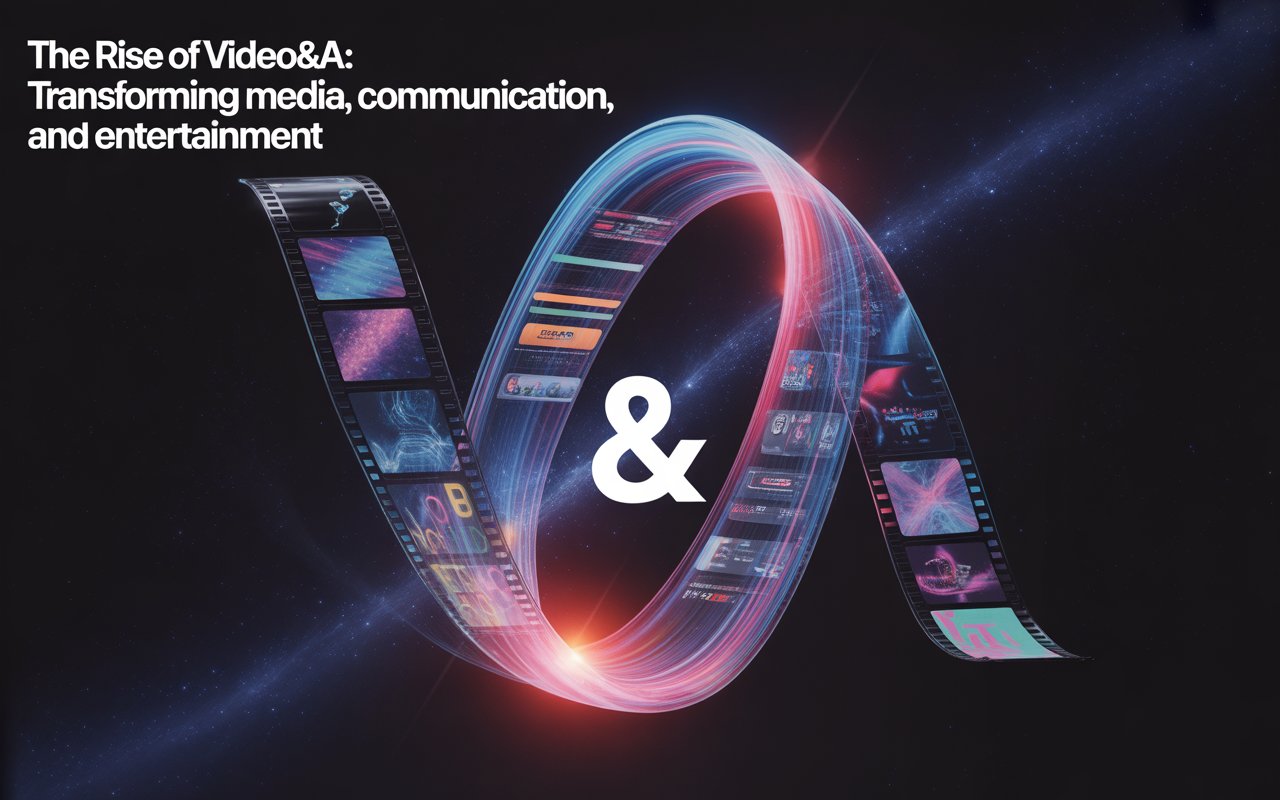In the ever-evolving world of digital technology, few concepts have had as profound an impact as video&a. It represents a new dimension in media and communication where visual content and advanced applications come together to create engaging experiences. Unlike traditional video platforms that focus solely on streaming or playback, video&a is centered around integrating interactivity, creativity, and technological innovation. This makes it more than just a tool—it is a movement transforming the way people connect, share, and consume content.
The Meaning of Video&A
The term video&a highlights the fusion of video with applications, interaction, and accessibility. It is not limited to passive watching but extends into creating meaningful dialogues, blending creativity with function. Video&a can be seen as the next step for content creators, educators, businesses, and entertainment industries. Its purpose is to empower users by giving them a way to not only view content but also engage with it in ways that were not possible in earlier digital formats.
Why Video&A Matters in Today’s Digital Age
Modern audiences demand more from digital content. Gone are the days when simply pressing play on a video was enough. Viewers now want to be involved, whether it is through commenting, interacting with embedded features, or accessing additional resources in real time. Video&a answers this demand by combining traditional video with added layers of functionality, creating richer and more personalized experiences. This relevance has positioned it as a driving force behind the next wave of media consumption.
Applications of Video&A in Education
Education is one of the fields that has been significantly transformed by video&a. Interactive video lessons allow students to engage beyond textbooks and lectures. With integrated quizzes, clickable resources, and real-time feedback, learners are no longer passive participants. Instead, they can actively test their understanding while watching. This approach has been widely praised for improving retention, making education more immersive, and bridging gaps in traditional classroom models. For educators, video&a provides a powerful method to reach students across different learning styles and locations.
Video&A in Business Communication
Corporate communication has also evolved with the introduction of video&a. Businesses today rely on visual content to engage employees, clients, and stakeholders. Traditional training sessions or product presentations often struggle to keep attention, but interactive video formats allow companies to deliver information in ways that are both engaging and efficient. Features like embedded Q&A sections, clickable case studies, or dynamic product demonstrations allow businesses to maximize the impact of their messages. For marketing teams, video&a offers opportunities to build stronger connections with audiences through memorable, interactive campaigns.
Impact on Entertainment and Media
Entertainment has always been at the forefront of technological shifts, and video&a is no exception. Streaming platforms are now exploring interactive features where audiences can influence storylines or explore behind-the-scenes content. Video&a makes entertainment more participatory rather than just consumable. Gamers, for example, can engage in live discussions while watching tutorials, while music fans can enjoy added experiences such as synchronized lyrics or artist Q&A sessions. By offering these new dimensions, video&a is reshaping how people think about movies, shows, concerts, and other forms of digital entertainment.
Accessibility and Inclusivity Through Video&A
An important dimension of video&a is accessibility. With integrated tools like subtitles, sign-language options, and audio descriptions, it makes content more inclusive for diverse audiences. This has opened doors for people with different needs to participate equally in the digital space. The concept goes beyond compliance with accessibility guidelines; it is about ensuring that digital media is truly universal. Video&a therefore contributes to social responsibility by making sure no one is left out of the conversation.
Technology Driving Video&A
Behind the rise of video&a lies a combination of advanced technologies. Artificial intelligence, cloud computing, and real-time data analytics are some of the major enablers. AI enhances personalization by recommending interactive elements based on user behavior. Cloud infrastructure ensures that even high-quality interactive videos are delivered smoothly across devices. Real-time analytics provide insights into user engagement, allowing creators to refine their content strategies. Together, these technologies make video&a not only possible but scalable across industries.
User Experience and Video&A
User experience plays a central role in determining the success of video&a. Since its goal is to merge video with applications, the design must be seamless. Audiences are more likely to engage if the interactivity feels natural and adds value. Poorly executed features, however, can overwhelm or confuse users. For this reason, thoughtful design and intuitive layouts are essential. Video&a demonstrates that when executed correctly, audiences are willing to spend more time engaging with content, which benefits both creators and viewers.
The Future of Video&A
Looking ahead, the future of video is bright and full of potential. As technology continues to evolve, new opportunities for interaction will emerge. Virtual reality, augmented reality, and mixed media could become integral parts of how video functions. Imagine a future where viewers not only watch a documentary but also step inside it virtually, or where corporate training includes realistic, immersive scenarios. With each advancement, the boundaries between video, technology, and human interaction will continue to blur.
Conclusion
Video&a is not just another trend in digital media; it is a transformative approach that redefines how people consume, interact with, and create video content. By merging interactivity, inclusivity, and innovation, it is shaping the future of communication across education, business, and entertainment. As users demand more meaningful experiences, video provides an answer by making content engaging, accessible, and future-ready. Its rise reflects the ongoing shift in digital culture toward participation and connection, signaling that this is just the beginning of a new era in media.

